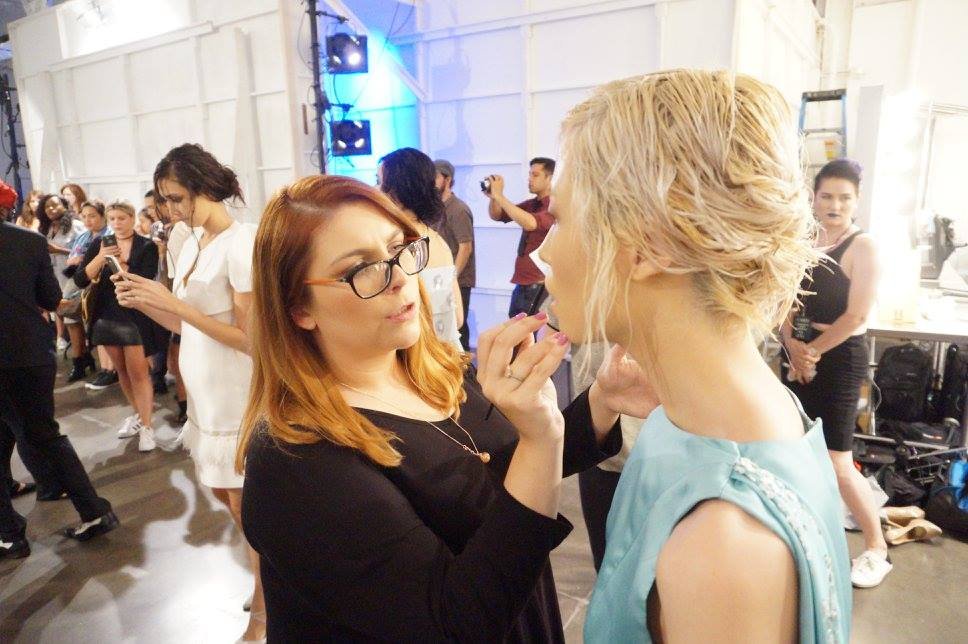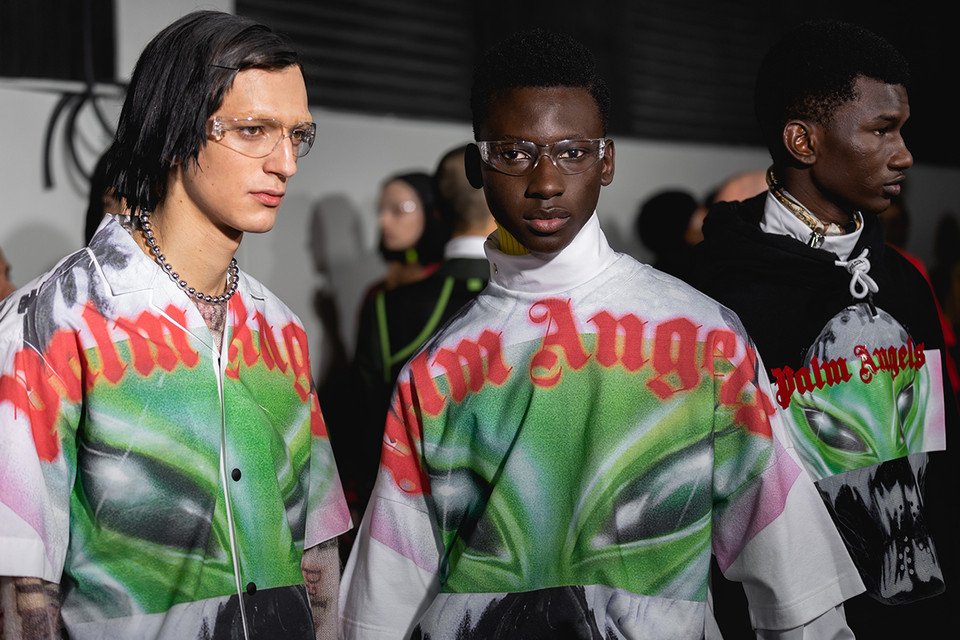How to get an in at Fashion Week
It’s a question I get asked, a lot.
Back in 2007 when starting my first makeup course I was asked by the tutor to set some goals on where I wanted to see myself in 5, 10 years. What did I want to achieve from my career? Real blue sky thinking. She asked us to visualise them, write them down. So I did. That pie in the sky goal of mine was to work at fashion week. Watching catwalk shows filled me with creativity, the link between the styling and the makeup, the sets, the music and the way it all came together to create these incredible walking works of art. The only thing? I had no idea what I needed to do to get there.
Fast forward 5 years I found myself working backstage at London Fashion Week and each year since I’ve been able to secure places on makeup teams working with world renowned artists with big name fashion houses and since then I’ve clocked up over 30 shows at both London and New York Fashion Weeks. I’ve worked on every sort of show, from smaller collective presentations to high end designers with last year keying my first 2 London Fashion Week shows.
I get asked how I did it. Let me explain.
Backstage at Rosenthal Tee, New York Fashion Week 2016. Key artist Tawni.
It all starts with 2 things. 1) A good network of connections and 2) a strong portfolio.
Let’s start off with building a network.
Networking with photographers, models, stylists and other artists is everything in the business of makeup artistry. I started freelancing in makeup before the world of Instagram, (if you can imagine that!). I contacted photography studios, local photographers and models with the view of building a portfolio. I’ll do another post on general tips on getting into the world of freelance makeup, so before I get carried away let’s chat fashion week.
What I’m referring to here is assisting and working on the big 4, these being New York, London, Milan and Paris fashion weeks. These are held twice a year, around February and September (with the exception of couture and Men’s fashion weeks, here I’ll focus on the ready to wear shows). There are huge teams that work on these shows, all headed up by a key artist. These key artists are big players within the world of fashion makeup whose work you’ll have seen on magazine covers and fashion campaigns for years. When it comes to fashion week, the bookings will come from the key makeup artist’s agency. To good place to start researching these is models.com - find the London based agencies first, go on their individual sites and list their makeup artists. Do your research here - not all artists will work fashion week so expect to spend some time going through their work, looking through Instagram at past shows they’ve keyed. When emailing, remember to avoid cut and copy emails. Keep it personal, your research will do you well here. Explain that you’re looking to assist such and such an artist, include your experience and your up to date portfolio (we’ll come onto that soon), Do this around 2 months before the shows and follow up a month before.
Backstage at Palm Angels, New York Fashion Week 2019. Key artist Diane Kendal.
Optioning
You could be doing 1 show a day you could be doing 3 shows. It really does depend on whose team you get on and what the schedules look like.
Usually an agency will put you on ‘option’. This is agency talk for availability. If you’re a first option for a show there’s an expectation that you’ll be there so bear this in mind if you’re looking to book more shows on the same day. Sometimes you’ll be released from option and if this happens don’t take it personally, reach out to your connections and open your availability back up. I’ve had this happen once. As it got closer to the date, the show secured a makeup sponsor and that sponsor brought in their own events team. Disappointing? Yes. But it can happen.
You can expect to be backstage for around 3-4 hours depending on the complexity of the look and the size of the show. Sometimes it’s impossible to fit in more than 1 show a day, sometimes it’s doable. Discuss this with the booker before you make any other commitments to other shows. Usually bookings will firm up around 2 weeks before a show, but expect things to change as things often do in the throws of the fashion week mayhem. The first time I did New York Fashion Week I was on option for 1 show, started talking to the key artist and pretty much stayed with her and her team for the rest of the week. I clocked up around 6 or 7 shows with her and loved every minute working with a great team on some really cool shows.
Backstage at John Paul Ataker, New York Fashion Week 2017.
Key artist Shareena Harris.
Pay
Pay can be all over the place depending on the size of the show and the brand you’re working for. In the early days I wasn’t breaking even (yes, another blog post is coming about how you shouldn’t work for free…) but I wanted the experience. My first shows pay was £50 and I’d spent that on travel alone. But that experience got me the contacts and knowledge to work in future shows, and it also built my confidence. It was that show that I met a hair stylist that gave me the contact for the New York agency I went on t secure around 10 future shows with. Since then, I’ve been paid everywhere between £100 - £350 a show. I’ve learned loads backstage working with other artists, so don’t underestimate the value of education, even if you’ve been in the game for a while. It’s a great way to network, to meet other artists and gives you the opportunity to get a glimpse at other artists kits.
Events Team vs Freelance
Whilst I’ve worked mainly at fashion week as a freelancer, there are ways into fashion week from a brand on a pro/events team. Usually these artists are picked from shop floors and counters of a brand and usually you’ll have to be working there a while and have a great record of sales, hitting targets, punctuality and generally a strong track record within the company. You’ll have to apply and complete a practical to be accepted onto an events team and still there’s no guarantee of regular work however when these shows and events come up they’re usually great experiences. With freelancing, your are your own boss. But you need to put the effort in to get those opportunities and network.
BOSS, New York Fashion Week 2019. Key artist Diane Kendal.
By the time you get to the fashion week point in your career you need to have that portfolio in place, so let’s chat about building that portfolio.
2) A strong portfolio
You’re expected to have a fairly decent portfolio by the time you’re applying to assist backstage. Working backstage means you have to be a quick worker, be able to take direction and have a strong kit to get you through most looks you’ll be given, which usually means you’ve worked for a few years to get to this point and likely you’ll have a portfolio to back that up. Agencies and key artists will want to see some sort of fashion in your portfolio. A varied set of images that are exactly that; varied, versatile and show your skillset. I edit my portfolio depending on each job I go for. I have a commercial portfolio, e-comm, fashion, beauty e.t.c. You don’t want the booker to do the hard work. They get hundreds of portfolios to look through. Your work needs to be obvious and accessible to them and by having evidence of fashion in there shows that you’ve got that skill and ability to begin with. Starting that portfolio can be tough, you’ll be constantly testing and working to build your book, coming back to your images, editing and refining and refreshing pretty consistently. This all comes down to point one: building your network, finding people who have the work that you want in your portfolio, contacting them and testing, assisting, learning and building that portfolio. I’ll write more on this in the future, but for now keep going keep shooting and keep networking.
The calm before the storm! New York Fashion Week 2017.




